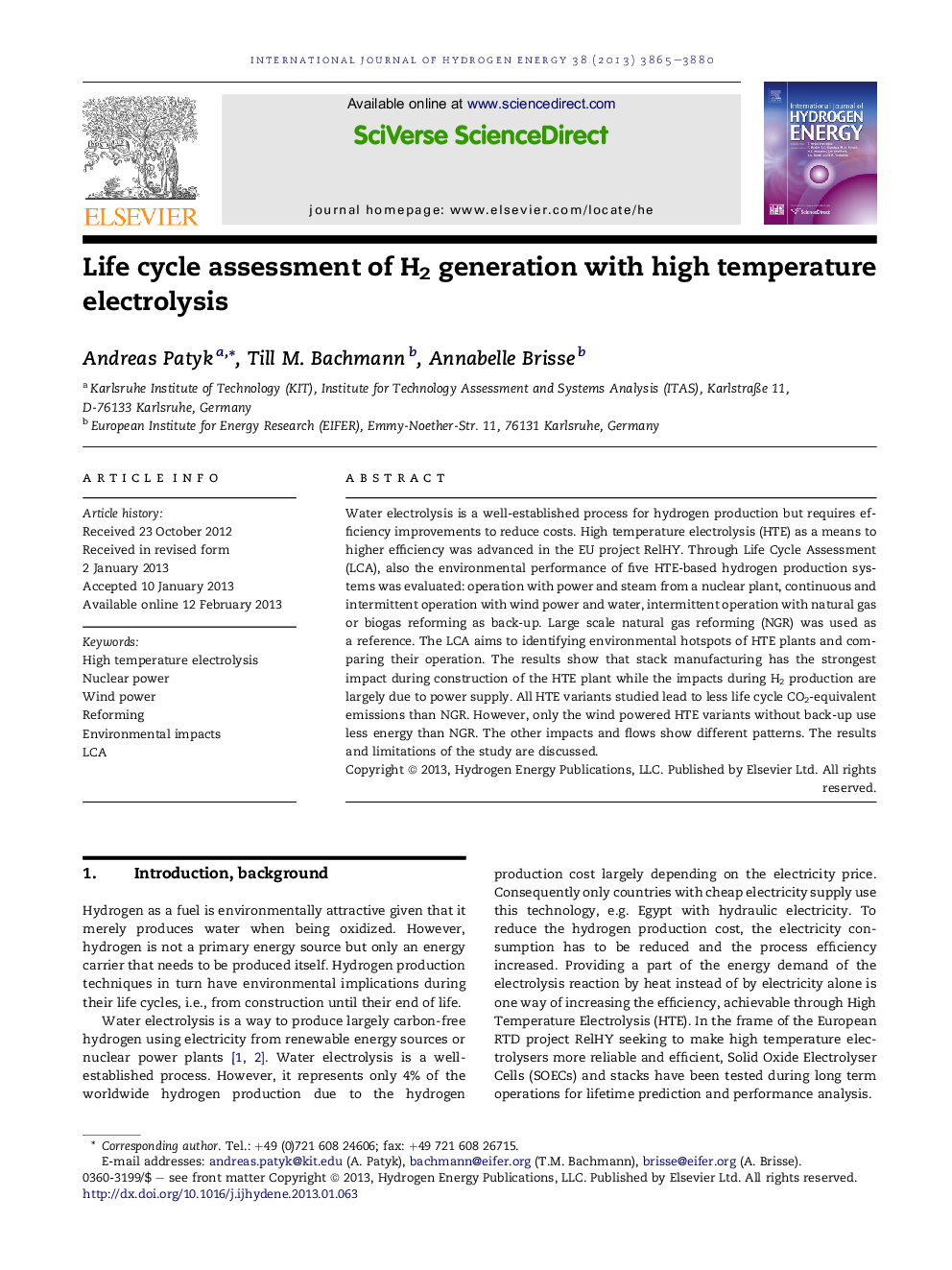| Article ID | Journal | Published Year | Pages | File Type |
|---|---|---|---|---|
| 1281848 | International Journal of Hydrogen Energy | 2013 | 16 Pages |
Water electrolysis is a well-established process for hydrogen production but requires efficiency improvements to reduce costs. High temperature electrolysis (HTE) as a means to higher efficiency was advanced in the EU project RelHY. Through Life Cycle Assessment (LCA), also the environmental performance of five HTE-based hydrogen production systems was evaluated: operation with power and steam from a nuclear plant, continuous and intermittent operation with wind power and water, intermittent operation with natural gas or biogas reforming as back-up. Large scale natural gas reforming (NGR) was used as a reference. The LCA aims to identifying environmental hotspots of HTE plants and comparing their operation. The results show that stack manufacturing has the strongest impact during construction of the HTE plant while the impacts during H2 production are largely due to power supply. All HTE variants studied lead to less life cycle CO2-equivalent emissions than NGR. However, only the wind powered HTE variants without back-up use less energy than NGR. The other impacts and flows show different patterns. The results and limitations of the study are discussed.
► The RelHY project studied durable HTE cells and stack including their environmental performance. ► The impacts of the total HTE plant are dominated by the stack manufacturing. ► Power supply largely dominates impacts from H2 production by the nuclear and wind power-based HTE. ► Nuclear powered HTE performs slightly better than wind powered HTE regarding climate change. ► All HTE variants perform better than natural gas reforming regarding climate change.
